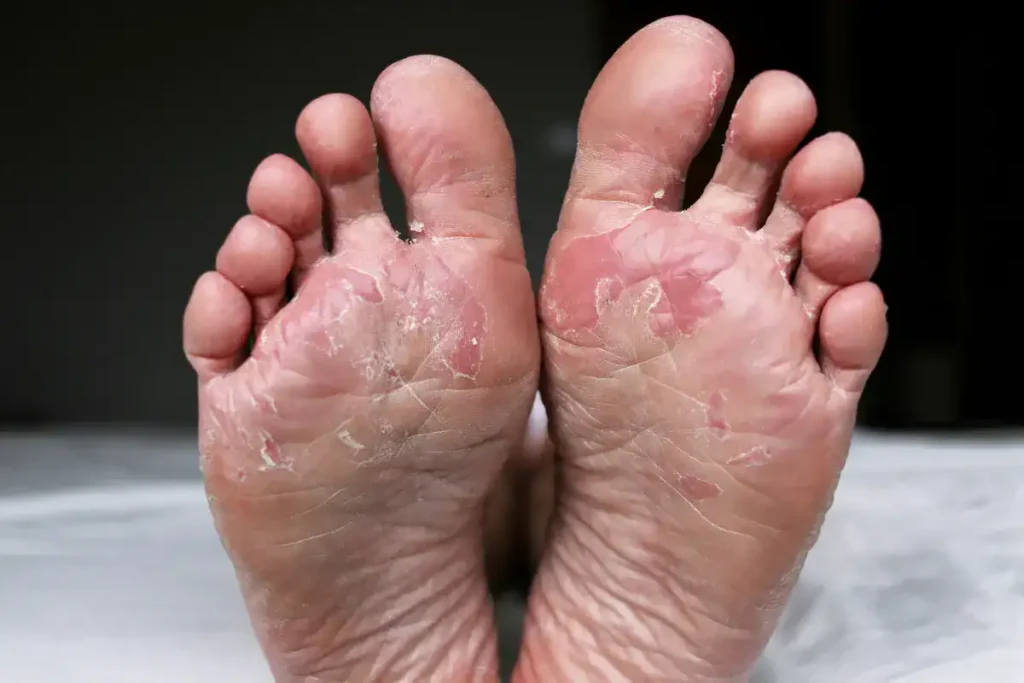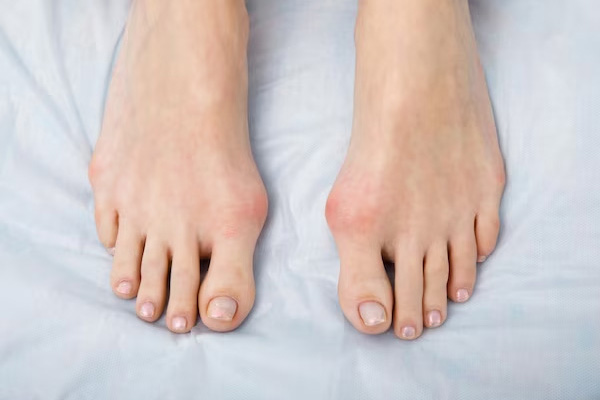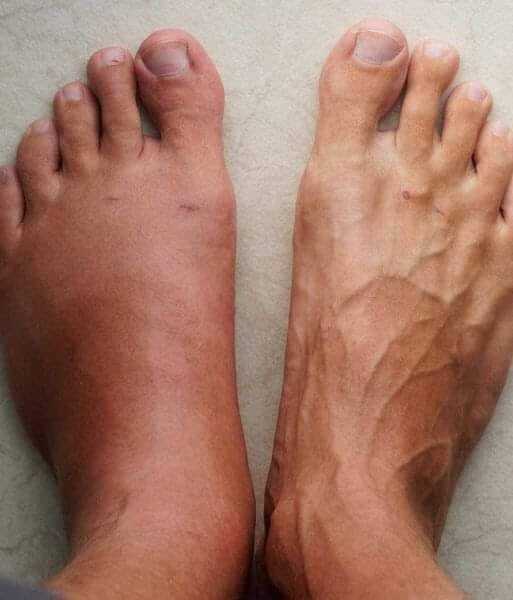Athlete’s foot is a common fungal infection that affects the skin on your feet, often causing itching, redness, and peeling. It can spread to other areas, like between your toes or on your soles, and is usually caught in warm, damp environments like gyms, locker rooms, or swimming pools. Though it’s called “athlete’s foot,” anyone can get it, not just athletes. The good news is, athlete’s foot is treatable and preventable. With the right care and treatment, you can relieve the symptoms and prevent the infection from returning. If you think you have athlete’s foot, it’s important to seek the right treatment to help your feet heal quickly and avoid complications. In this article, we’ll explore the causes, symptoms, and effective treatments for athlete’s foot, so you can get back on your feet with confidence.
Athlete’s Foot
Athlete’s is a contagious fungal infection that affects the skin on your feet, especially the soles and between the toes. Also called tinea pedis (or foot ringworm), it’s caused by fungi called dermatophytes. These fungi love warm, moist areas, which makes your feet the perfect place for the infection to grow. While it’s often linked to athletes, anyone can get athlete’s foot,
and it’s most common in teens and adults.
What are the types of athletes foot?
Athlete’s foot can be divided into different types based on where it affects the feet and how severe it is:
- Toe-web infection: This is the most common type and affects the skin between the toes, usually between the fourth and fifth toes.
- Moccasin-type infection: This affects the soles of your feet. The skin becomes sore and cracks. In severe cases, toenails may get infected and fall off. This type might need oral medication.
- Vesicular-type infection: This type causes blisters filled with fluid. It usually affects the soles, but sometimes it can affect the toes too.
- Ulcerative infection: This is the rarest and most serious type. Blisters break open, creating sores. It usually starts between the toes but can spread anywhere on the feet.
Who can get athlete’s foot?Athlete’s can affect anyone, but it is more common in men, especially teens and adults. Poor hygiene and walking barefoot in public places like showers can increase the risk. People with diabetes or weak immune systems are also more likely to get athlete’s foot. Being overweight can make you more at risk too.

What are the causes for athlete’s foot?
Athlete’s is caused by three types of fungi: Trichophyton, Microsporum, and Epidermophyton. These fungi live on the dead skin on the surface of your feet and can cause infections. Certain things can make you more likely to get athlete’s foot. For example, if you’re always on your feet or have damp shoes for a long time, you’re at a higher risk. A Digital Pakistani lifestyle, where you might not pay attention to foot care due to long hours spent on screens, can also contribute. Keeping your feet dry and clean helps prevent this infection.
Athlete’s foot thrives in warm, moist places. If you have sweaty feet or wear tight shoes that don’t let air flow, you’re more likely to get it. Poor foot hygiene can also increase the risk, especially if you don’t dry your feet well after bathing, making it easier for the fungus to grow.
Sharing personal items like towels, shoes, or socks with someone who has athlete’s foot can spread the infection. Wearing shoes that don’t allow your feet to breathe, like tight or poorly ventilated ones, also creates a perfect place for fungi to grow—this is why it’s often called athlete’s foot.
People with weakened immune systems, such as those with HIV/AIDS, diabetes, or autoimmune diseases, are more likely to get athlete’s foot because their bodies have a harder time fighting off infections.
And yes, foot is contagious.
Which preventative measures are most effective for an foot?
Here’s how to prevent athlete’s foot:
Wear shoes in public places like bathrooms and locker rooms.
Don’t share towels, socks, or shoes.
Dry your feet well after a shower, especially between your toes.
Change your socks often and wear clean ones.
Wear shoes that let your feet breathe.
Use different shoes each day so they can dry.
Take off your shoes when you’re at home to let your feet air out.
Wash towels and socks in hot water.
These easy steps will help keep your feet safe and healthy.
Phoenix, Arizona Foot Treatment Options
Start treating the athlete’s foot as soon as you notice any signs, even if they seem mild. Most people (70%-75%) can get better with topical antifungal treatments. You can find several over-the-counter antifungal creams or sprays that work well for treating athlete’s foot.
Here are simple treatments for athlete’s foot:
Allylamines: Medicines like Naftin and terbinafine are often used. Terbinafine works well for many people.
Azoles: Creams like clotrimazole and miconazole work well when used for 4-6 weeks.
Ciclopirox: This comes in cream, gel, or lotion and has brand names like Loprox.
For most mild foot, over-the-counter treatments work. But if you’re not sure, it’s best to ask a doctor before starting.

Which preventative measures are most effective for an athlete’s ?
Here’s how to prevent foot:
Wear shoes in public places like bathrooms and locker rooms.
Don’t share towels, socks, or shoes.
After a shower, dry your feet well, especially between your toes.
Change socks often and wear clean ones.
Wear shoes that let your feet breathe.
Use different shoes so they can dry.
Take off your shoes when you’re home and let your feet air out.
Wash towels and socks in hot water.
Your feet will stay healthy if you follow these easy steps.
Final Thoughts on Mesa, Arizona, and Ahwatukee, Central Phoenix, Athlete’s Treatment
A fungal infection that primarily affects the feet is called athlete’s foot.
It’s contagious and doesn’t go away on its own. Antifungal treatments can help clear it up. Our team has successfully treated many people with athlete’s foot and other skin conditions. Our caring and experienced dermatologists are here to help you, no matter how busy your Digital Pakistani lifestyle may be. We offer convenient locations and are ready to help you feel better.
